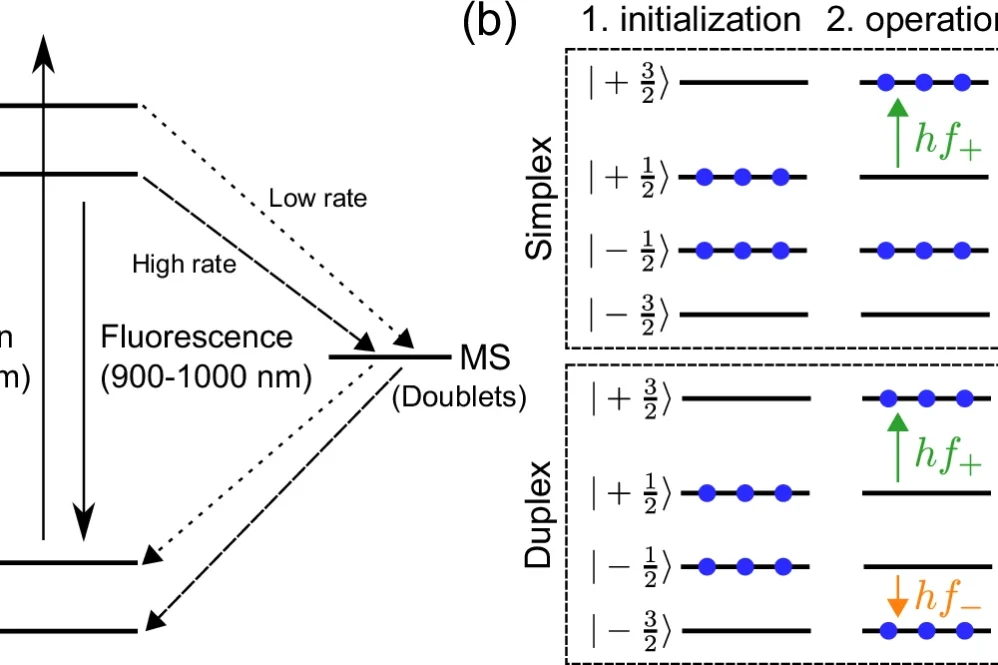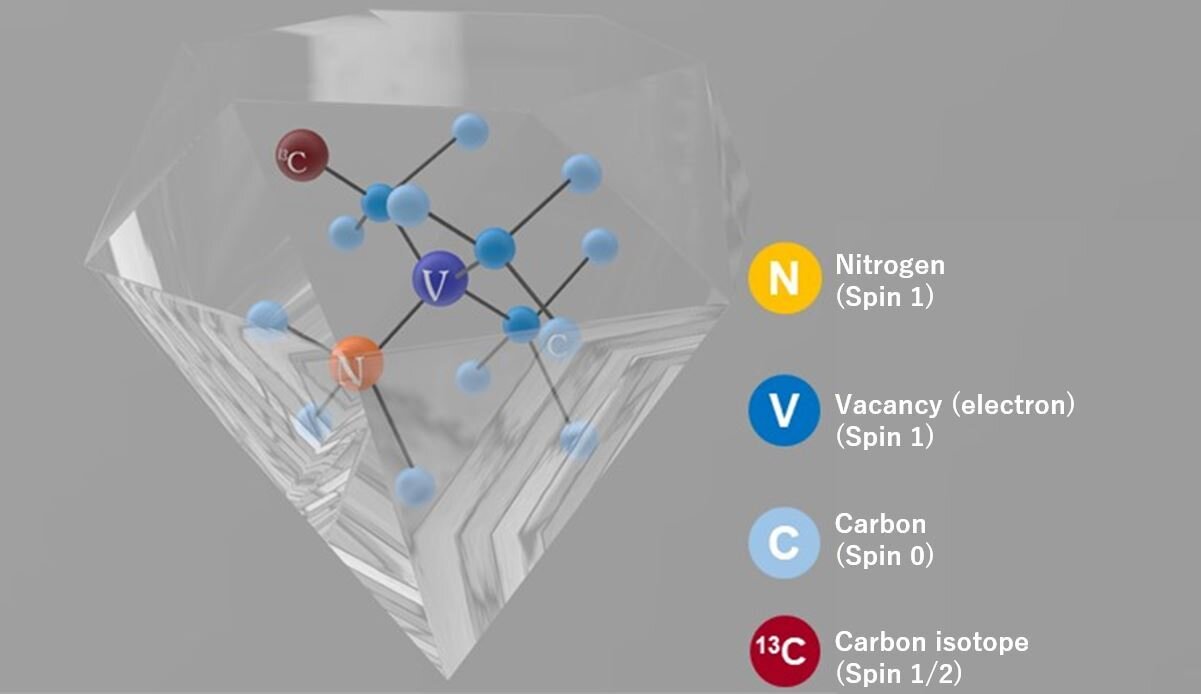The silicon vacancy (VSi) center in Silicon Carbide provides a promising optically addressable qubit that functions at room temperature. However, it faces challenges in optical spin initialization and readout compared to nitrogen-vacancy centers in diamond. The key limitation stems from its spin-3/2 electronic state, where optical processes only create contrast between the ±3/2 states, while leaving the ±1/2 states unaffected.
When operating just one qubit (e.g., +3/2 and -3/2 states), the population in the remaining states (+1/2 and -1/2) remains unchanged, contributing to background noise during optical readout. This results in significantly lower contrast (only a few percent) compared to the 20-30% typically achieved with other systems, compromising sensitivity in quantum sensing applications.
To address this limitation, researchers propose a novel duplex qubit operation scheme. Instead of driving only one qubit transition, they simultaneously operate both the +3/2↔+1/2 and -3/2↔-1/2 transitions using microwave pulses at two resonant frequencies (f+ and f-). This approach effectively engages all spin states in the quartet, doubling the signal contrast in optical readout.
The researchers experimentally demonstrated that this duplex operation technique significantly improves performance in several ways:
- It doubles the contrast in optically detected magnetic resonance (ODMR) measurements
- It enhances sensitivity in AC magnetometry compared to conventional single-qubit operation
- It makes better use of the unique spin-3/2 nature of VSi centers
This advancement is particularly valuable because SiC offers substantial practical advantages over diamond, including mature material technology, commercial availability of high-quality wafers, and established industrial applications. VSi centers can also be reproducibly created through various irradiation methods and have demonstrated compatibility with electronic device technologies.
The duplex qubit operation approach represents an important step toward making VSi centers in SiC as practical for quantum sensing as NV centers in diamond, potentially enabling applications that benefit from SiC’s technological maturity while achieving competitive sensing performance.
Reference: Tahara, K., Tamura, Si., Toyama, H. et al. Quantum sensing with duplex qubits of silicon vacancy centers in SiC at room temperature. npj Quantum Inf 11, 58 (2025). doi:10.1038/s41534-025-01011-2



